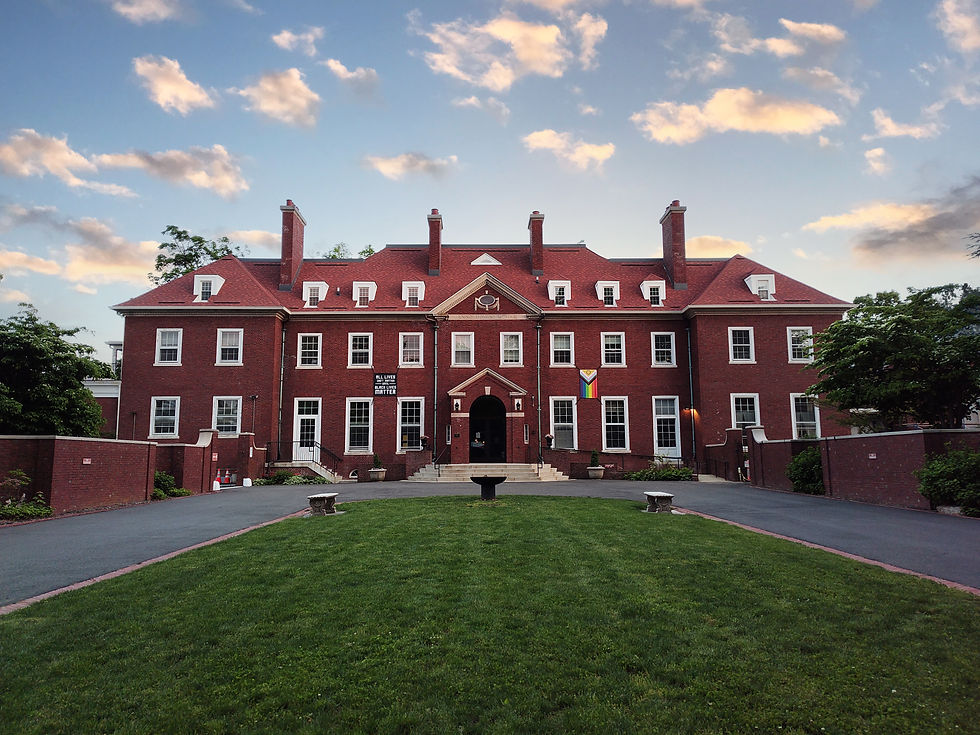The Congregation is the Curriculum
- Nick Wallwork

- Mar 7, 2023
- 3 min read
The number one thing I talked about with the team that hired me was “Bridging the Upstairs/Downstairs Divide” which has been so prevalent at the Fellowship. And in learning about the history of the Fellowship, this is an intentional design. This “Silo-ing” was common in churches in the 70s, 80s, 90s, and early aughts. But scholarly study and writing have repeatedly found that this no longer works. Some argue that it never actually did work.
UU Religious Educator Kim Sweeny wrote extensively on this. She writes, “Religious educators are being invited to engage the entire congregation in faith formation.” and shares a quote from UU leader Connie Goodbread, “Faith development is all we do. Unitarian Universalism is the faith we teach. The congregation is the curriculum.”
One more time for those in the back: The Congregation is the Curriculum.
Engaging the ENTIRE Congregation authentically and comprehensively is extremely important to the growth of the Fellowship, the promotion of UU values, and creating a better world by, as Joel says, saving lives. It is the best way to realize the goals of the strategic plan and the promise of the new building.
As we move to break ground on the new building, seek a new settled minister, and implement the strategic plan, it is now time to begin making tangible changes to grow. Growth requires change. But for many, change can be the scariest. It means a loss of control or comfort. There is often a feeling that accepting change is also an acknowledgment of wrongdoing. But this is not the case. Change and growth continue the work that started almost 70 years ago.
The first step to creating meaningful change without losing our history or sense of ourselves is to critically look at the things we look back on fondly and dissect those experiences. What was the deeper reason that those were meaningful to us?
I’ve heard many different stories about various trips that used to happen and a desire to just recreate them. Now that is an option, but perhaps not one that makes sense today. What was it about the trip that was really meaningful?
Was it the destination or the activity done there? OR was it the trip itself? Was it that fact that young people were able to bond over an extended period of time on a shared mission? Perhaps a pilgrimage to a spiritual site or a trip to a protest would also make the same impact while speaking to the desires of people of all ages.
Are we a unique religious organization because many different committees do all the work, each overseeing its own area of the Fellowship? OR is it because we have been guided by a shared vision and desire to make the world a better place? Perhaps we can continue having big-picture conversations with people from all different walks of life and leave the nitty gritty to the professionals.
So how do we do this work moving forward? To get back to the beginning of this is to do it TOGETHER. All ages, genders, racial backgrounds, and religious upbringings. This means stepping out of our comfort zones. It means having “noisy” kids in the service on Sunday. It means printing out directories. It means true collaboration. No group owns a program, event, space in the building, or vision. Collaboration means listening to each other and not expecting others to do it “our way.” Collaboration means giving as much control as we seek to retain. Collaboration means we don’t see ourselves as the smartest in the room.
It is my hope and goal to have conversations for creating a truly collaborative, inclusive, and multi-generational community that cares for the spiritual, political, and emotional needs of everyone in our reach.




Comments